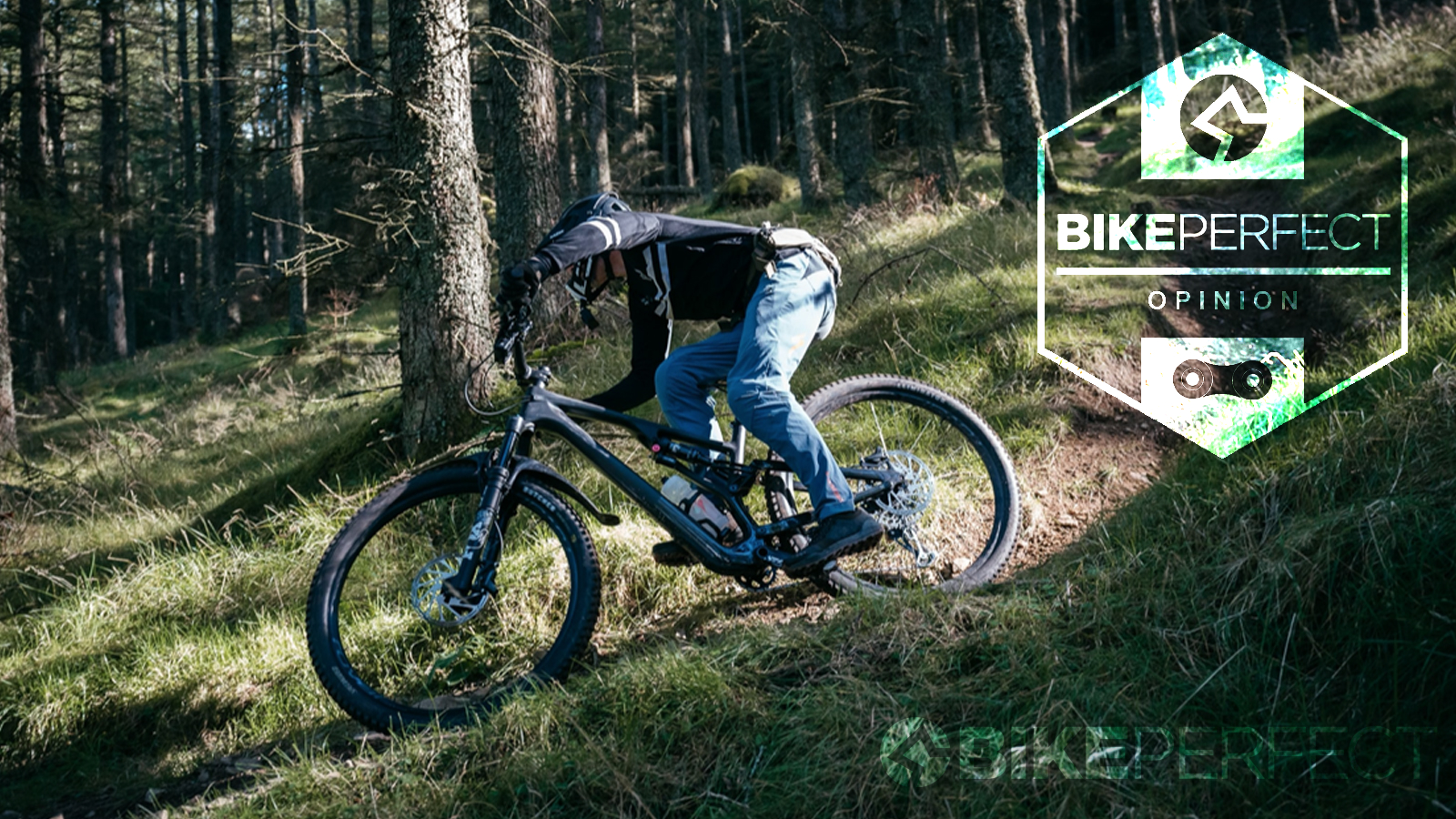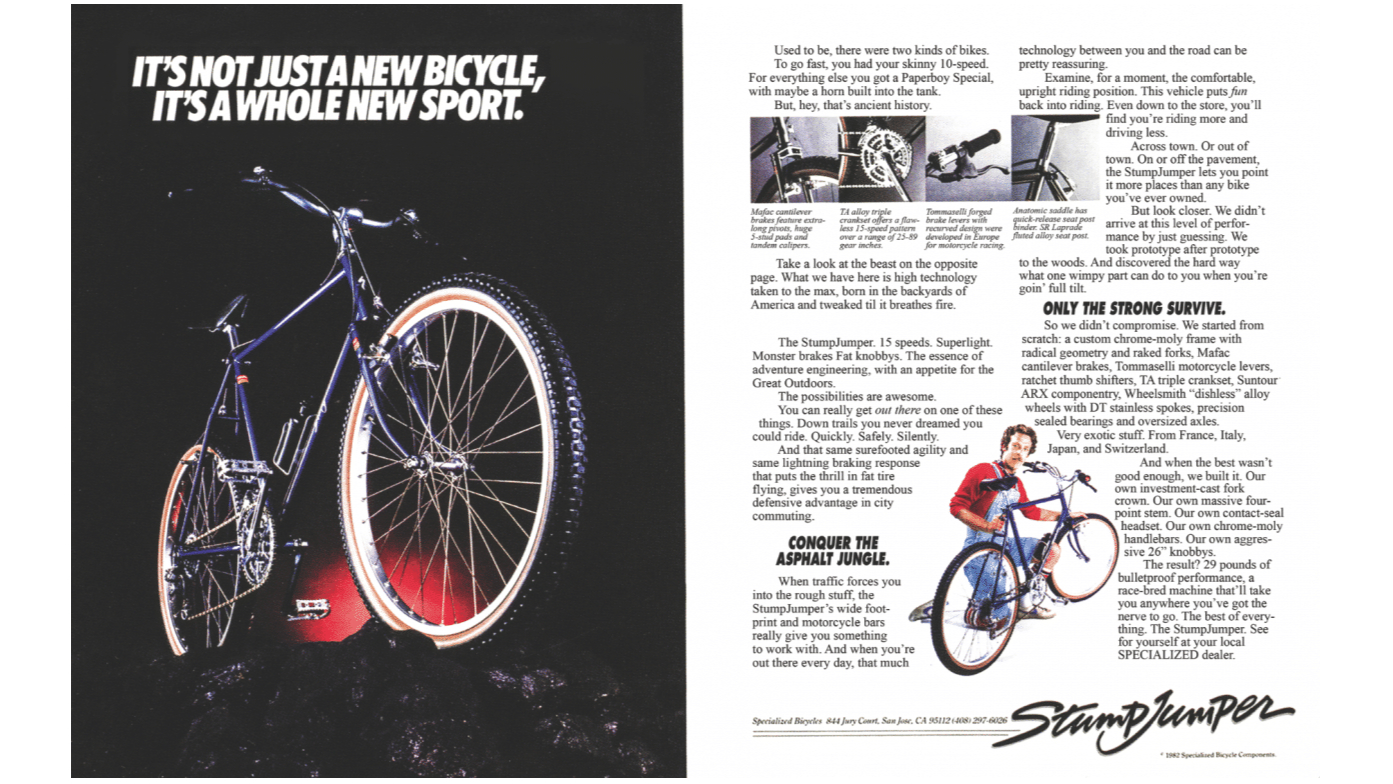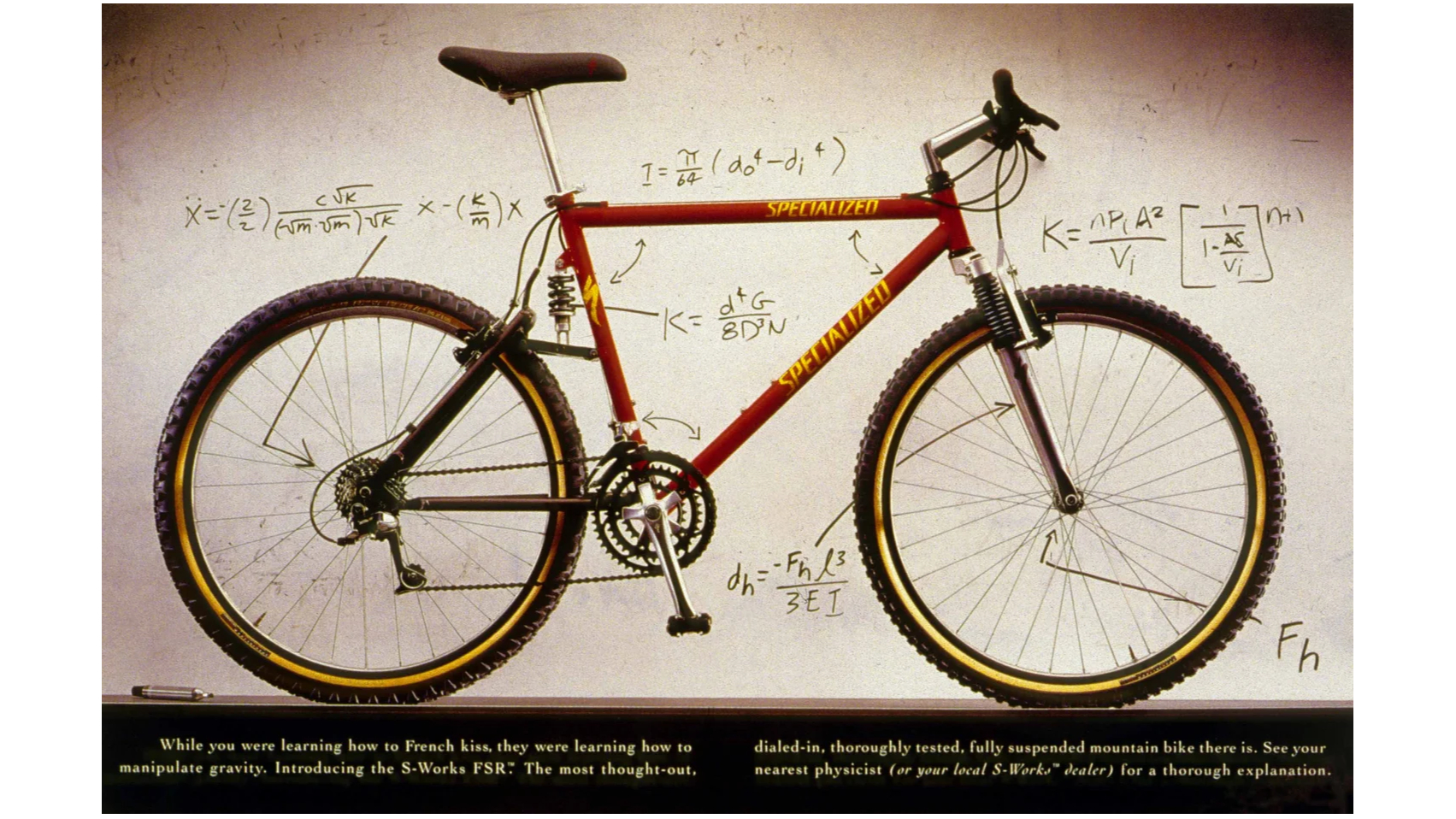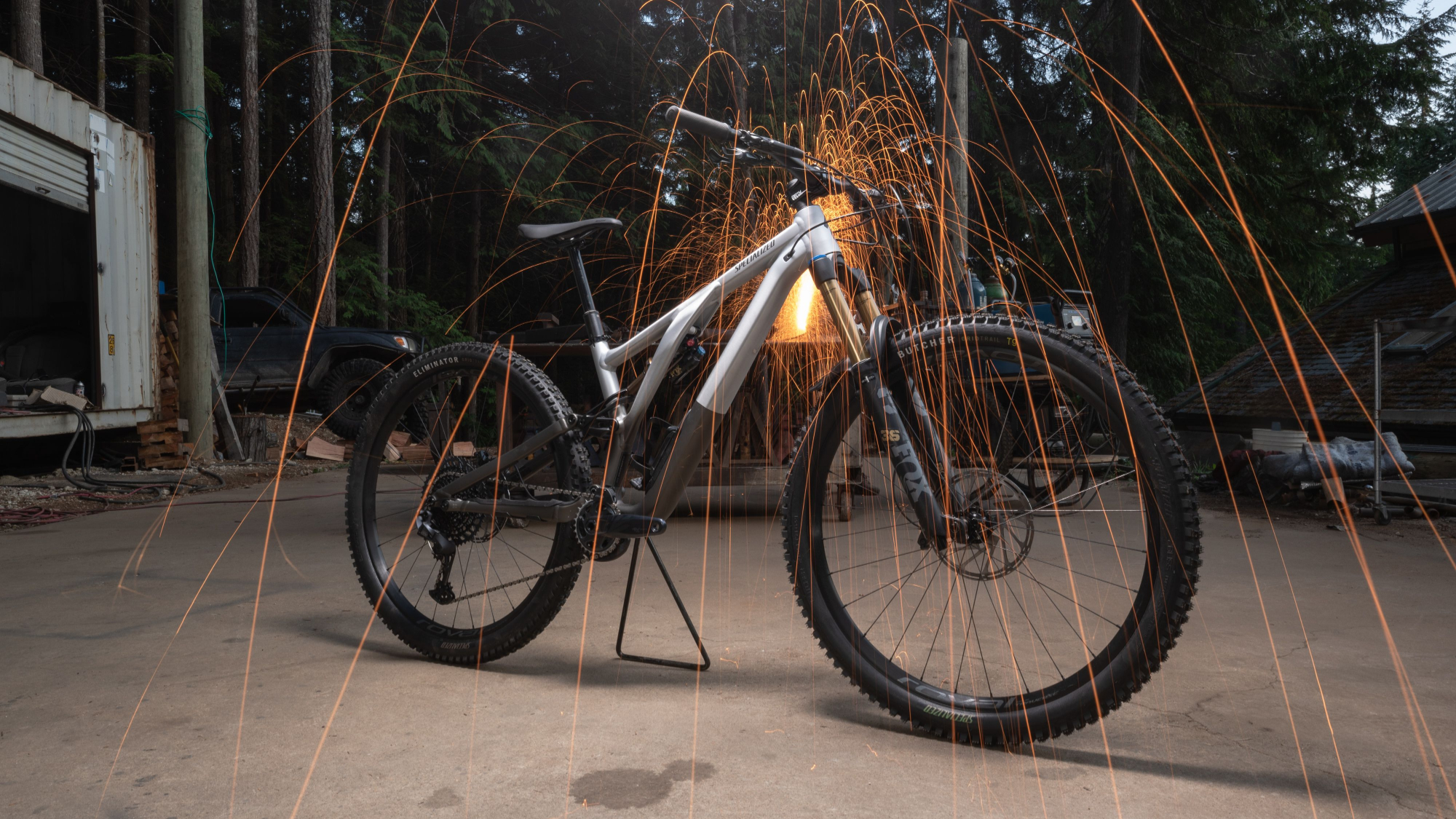Bespoken Word: Specialized Stumpjumper and the history of mountain biking
Guy Kesteven looks back over four decades of an iconic bike’s story to see what it tell us about the development of mountain biking and where it might be going next

Specialized’s Stumpjumper first burst onto the mountain bike scene in 1981 and instantly became both an icon and a huge sales success. Its parents were a custom-built 26-inch wheeled, riser-bar-equipped Lighthouse Chaparral UK-inspired ‘rough stuff’ bike made by Tim Neenan – who also designed the first Specialized road bikes and a Ritchey/Fisher MountainBike that Specialized founder Mike Sinyard bought from Gary Fisher. If you believe Gary, then Mike’s bike also had overlong forks which threw out the geometry as he knew what was likely to happen as soon as Mike found a love for MTBing.
He wasn’t wrong either, Mike had already been having Tim’s road bike designs built in Japan for several years and so it was a no-brainer to have a mountain bike frame made by the same factories and shipped to California for final construction. While it wasn’t the first production mountain bike (the Koski brothers and Univega are front runners for that title), Mike went full-out with the marketing of the bike with double pages spreads that saw his first sell-out shipment of 250 bikes double in the first year and then overall US MTB sales leap to 5000 the next year and 50,000 in 1983.

The Stumpjumper was at the heart of this sales boom, too, rapidly becoming a household name as racing became a thing and legendary riders like Ned Overend took their Stumpjumpers to top-level success, including first place at the first-ever MTB ‘World’ championships. As the '80s turned into the '90s, the steel Stumpjumper spawned the premium S-Works range including the ‘Metal Matrix alloy M2 and the carbon fiber and titanium Epic, reflecting the sudden rise of other materials on the MTB menu of other brands. Interestingly, while Specialized pushed its ‘innovate or die’ mantra hard through materials, it was one of the few brands not to produce an elevated chainstay bike in the early '90s, but it did develop its own brand components into category leaders. This included the awesome Prolong saddle, the Ground Control all-rounder tire and the super-light, Sub 6 helmet often sold through specialist ’S-Works dealers' who were the precursors of Specialized’s brand dedicated concept stores.
Specialized was also slightly behind the curve introducing a full-suspension bike, too, but that meant it wasn't on the same ‘what were they thinking?’ parade of manufacturers such as Trek and Cannondale. Instead, Specialized actually came to market with an effective four-bar ‘FSR’ system. Once the shock and linkage had rapidly moved from behind the seat tube, this became the basis for most Specialized suspension systems right up to the present day. It also ushered in the idea of a full-sus Stumpjumper sitting alongside the hardtail Stumpjumper as a complementary equal rather than some kind of spring-loaded freak show.

That was how it stayed for a long time, too, as Specialized introduced another literally enduring, longer-travel full-suspension bike into its range with the Enduro. As riding became more progressive and the media pushed either the wilder side of the sport or the purer racing side, it was the Enduro and the automatic shock Epic that took the limelight. This left the Stumpjumper to occupy a very well-balanced, vice-free and popular center ground, but its mid-travel, middling geometry performance was unlikely to raise pulses. In fact, its whole persona was about comfortable, easy-riding friendliness which suited the naturally neutral ride feel of the FSR kinematic perfectly. Add in the continued development of Specialized’s component, tire, equipment and clothing ranges, and the Stumpjumper pretty much personified the generally held view that it was hard to go far wrong if you based your mountain biking around the ‘Big S’ brand.
This continued as it shifted from 26er to 29er to 27.5in to plus and then back to 29er wheels to reflect (rather than lead) the fluctuating fads of the 2010s and gradually grew in terms of travel and capability in-line with the expectations of everyday riders. When the Turbo Levo E-bike was introduced in 2015, it was basically a motorized version of the current (pun intended) Stumpjumper FSR. With the same neutral FSR suspension system, 150mm of travel and neat, innovative detailing (such as self-setting ‘Auto sag’ air pressure shock systems and built-in SWAT multi-tools), it still occupied the same ‘this is what a smart, versatile MTB is now’ position as the original Stumpjumper 34 years before. And you could have forgiven Specialized for carrying on this very successful, gradual evolution of its core model forevermore, and for the next generation, it did.
Splitting the Stumpjumper into two different travel versions (the 120mm travel ST and the 150mm travel regular bike) using different linkages and shocks on the same carbon or alloy frames, and straddling it over two-wheel sizes seemed like the safe way to cover all the bases of a market that was still unsettled on future standards. However, with a short reach compared to the trendsetters and suspension that was a bit soggy even in the short travel version the Stumpy was off the boil for the first time in a long time.
Thankfully it seems like even someone at Morgan Hill HQ thought so too as a limited edition ‘Evo’ Stumpjumper sneaked out shortly after the main launch. The Evo wasn’t just a slight tweak of the existing bike either. While it looked broadly the same and the suspension was similar in layout, it was radically different from the standard Stumpjumper in terms of freakishly progressive geometry and shock tune, and it was only available in alloy. That didn’t stop it suddenly becoming the must-try bike for every tester and the must-keep-hold-of addiction of those lucky enough to grab one of the limited number, limited sizing initial run. While it was almost certainly a shock how well this almost DH angled sideshow project was received by rad riders, Specialized has never been shy about making the most of an opportunity. The company introduced a broader range of sizes and carbon-framed versions of the Stumpjumper Evo as soon as they could and they were grabbed with equal glee by riders who wanted super confident, speed and tech slaying geometry but didn’t want the terrain crushing long-stroke domination of the monster that the best enduro mountain bikes have now become.

Last year's Stumpjumper overhaul not only saw a complete shift to this more radical geometry approach but a total abandonment of the old ‘safe, middle ground’ positioning of the model. Now you chose between either the shorter-travel, flex-stay rear suspension Stumpjumper in carbon or alloy, or the radical, multi-adjustable geometry Stumpjumper Evo in carbon. The latest models come with features such as the sidearm asymmetric frame design and Specialized innovated (but now widely copied) internal SWAT box storage in the downtube.
And with that introduction, it feels like the Stumpjumper is back where its ancestor from 40 years ago would be proud to see it be. An innovative, smartly practical, machine that’s designed both in response to increasingly radical trends but also to allow those limits to be pushed further by regular riders. And from a personal point of view, it feels good that a bike that started its off-road adventures roughly the same time as ten year-old-me did is still fighting hard to have more fun and go farther and faster than ever, just like I am. So yeah, while I’ve not always seen eye to eye with every Stumpy I’ve tested over the years, I’m really looking forward to getting aboard the new alloy Evo and enjoying just how far mountain biking has come, and how much it still promises to give.

Guy Kesteven has been working on Bike Perfect since its launch in 2019. He started writing and testing for bike mags in 1996. Since then he’s written several million words about several thousand test bikes and a ridiculous amount of riding gear. He’s also penned a handful of bike-related books and he reviews MTBs over on YouTube.
Current rides: Cervelo ZFS-5, Specialized Chisel, custom Nicolai enduro tandem, Landescape/Swallow custom gravel tandem
Height: 180cm
Weight: 69kg
